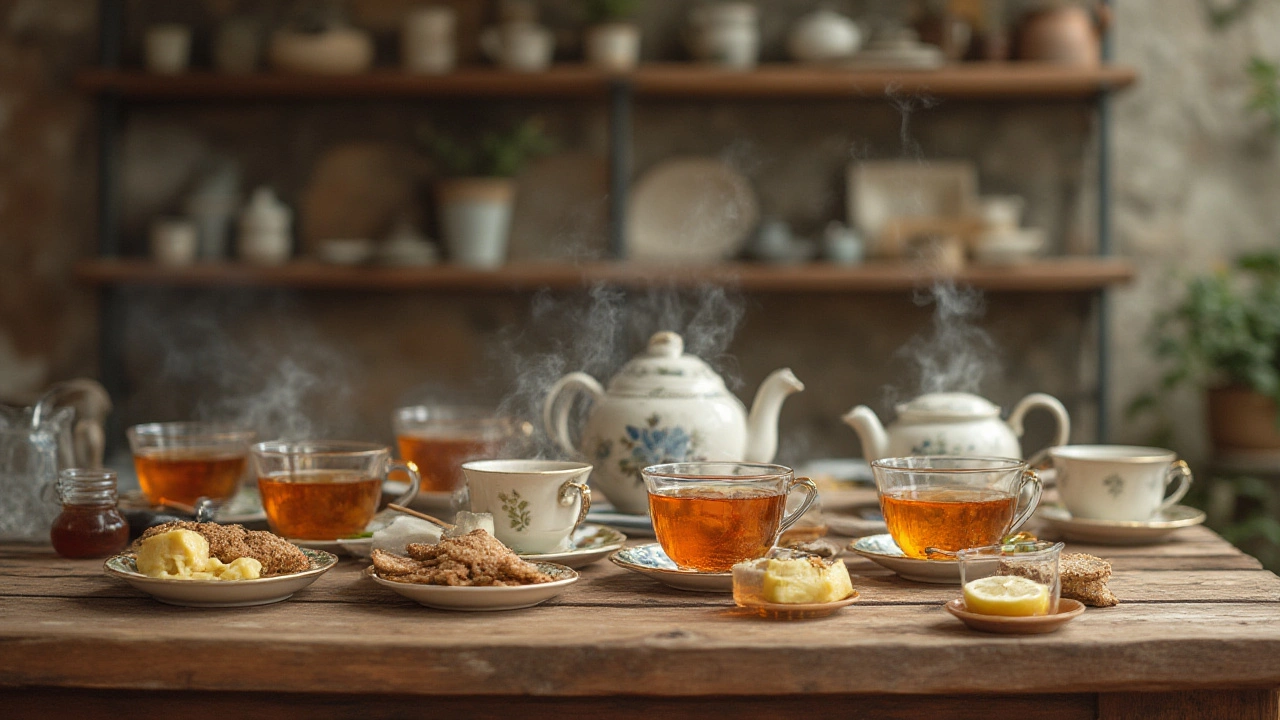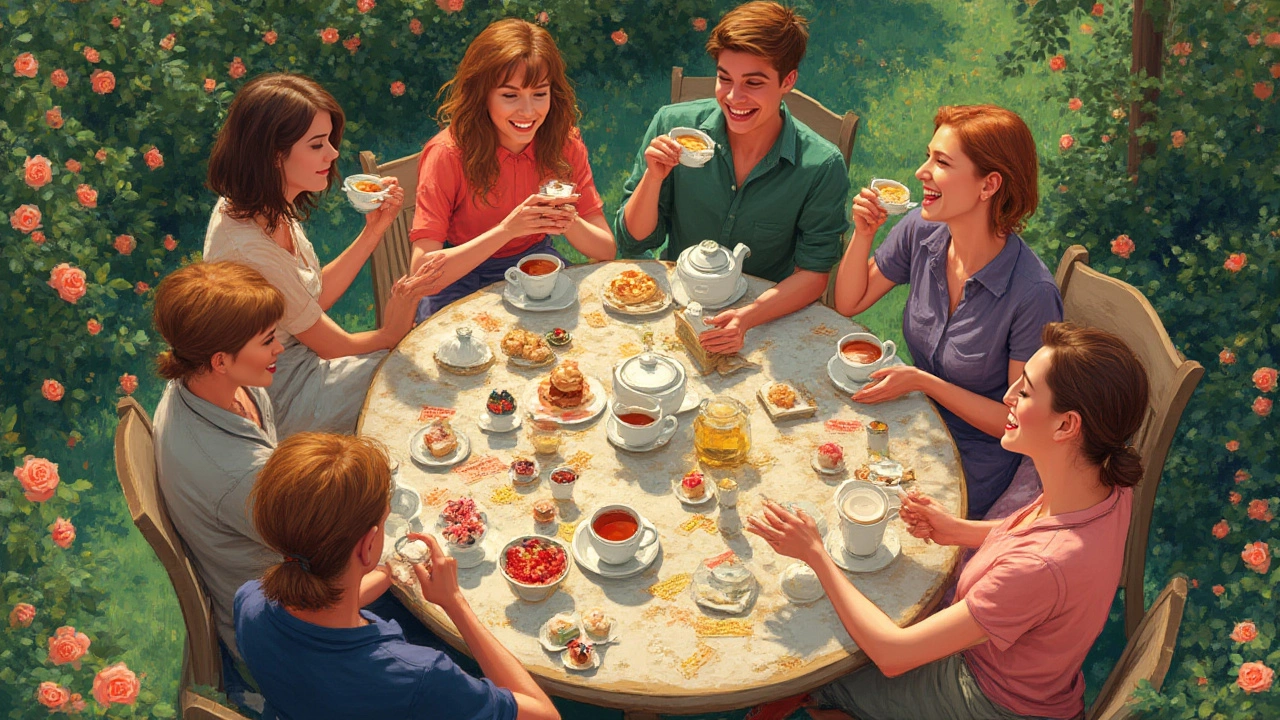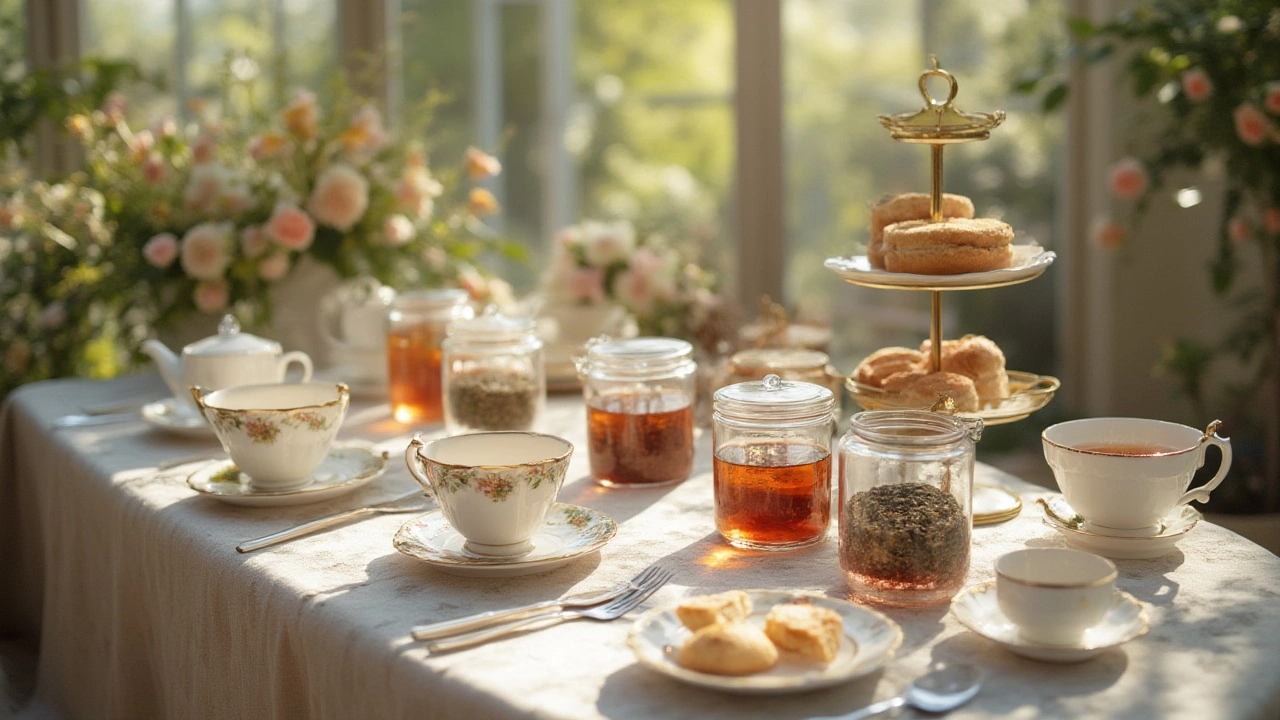Think tea tasting is just for the stiff and stuffy? Think again. The magic of exploring tea goes way deeper than popping a few teabags in water and dunking a biscuit. A proper tea tasting turns your table into a traveling teahouse—inviting you and your friends (or even just your curious self) on a full sensory tour. It's social, it's delicious, and it can get surprisingly nerdy in the best way. But here's the kicker: it's not just about what’s in your cup. Picking the right foods and extras changes everything. So, what should you serve at a tea tasting to make it unforgettable?
Choosing the Perfect Teas for Tasting
You can't have a tea tasting without, well, tea. Thing is, you don't just grab whatever’s lurking in your kitchen. You want variety. The best lineups take guests on a flavor journey—across continents, leaf styles, flavors, and caffeine levels. Most classic tastings roll with about five or six teas so you hit all the bases without overwhelming anyone's palate.
Start with the basics—try one from each main type: white, green, oolong, black, and puerh. Want a crowd-pleaser? Go black for bold flavors (think Ceylon or Assam), green for freshness (a nice Japanese sencha or a grassy Chinese longjing), and oolong for complex, florally in-between notes. Add a white tea (like silver needle for its sweet, delicate notes) and a wild card like a smokey lapsang souchong or fermented shou puerh.
You can also build themed flights. Do all Japanese teas—sencha, genmaicha, gyokuro, matcha. Or run a regional showdown: three Chinese greens, three Indian blacks. Get adventurous with single-origin, rare, or seasonal teas. No strict rules, except don’t pile on too many heavily flavored or sweet blends—let true teas shine. If you throw in herbal teas (called tisanes), keep them for the end. Chamomile, rooibos, or mint are perfect palate refreshers but they’ll wipe out subtle notes if you taste them too early.
The pros? They use short steeps in small cups to make it easier for folks to compare side by side. Some even use the official tasting sets—white bowls, little lids, special spoons—but don’t sweat it. Regular mugs and a lineup of glass or ceramic teapots do just fine. Just keep water hot and filtered. And don’t forget to rinse those leaves. Sort your teas from lightest to darkest, so the bold ones don’t overpower the delicate flavors early on. Order matters!

Snack and Food Pairings: Beyond the Usual Biscuits
This is where the fun starts—and where most at-home hosts go wrong. Sure, shortbread is classic, but the best tea tastings borrow lessons from wine and cheese nights. You want foods that let the tea shine, not drown it. Skip heavy sauces, garlic, and spices that’ll stomp all over subtle floral or vegetal notes.
What are the MVP snacks? Plain scones with a swipe of clotted cream. Finger sandwiches—think cucumber, egg and cress, smoked salmon, thinly sliced radish with butter. Don’t overload on condiments; a sliver of cheese or dab of lemon curd is all you need. Cheeses can be magic with tea, but avoid strong blue cheese or anything too stinky. A young goat cheese, mild brie, or soft cow’s milk cheese works wonders alongside green and white teas.
For a touch of sweet, look at madeleines, macarons, or plain shortbread. Almond biscotti and honey cake are solid too. Fruit is great—especially when sliced into easy-to-eat bites. Try fresh strawberries, apple slices, or a bowl of raspberries. Dried fruit like apricots add a punch of sweet without making a mess.
Craving crunch? Toasted nuts (unsalted) are your friend. Almonds, hazelnuts, or little bowls of sesame crackers give folks something to nibble without flavor overload. Japanese rice crackers (senbei) are spot-on with grassy green teas. If you want something more filling, steamed dumplings (no dipping sauce) or shrimp siu mai go surprisingly well with high-mountain oolongs.
One sneaky tip: offer a palate cleanser. A glass of filtered water (room temp, never ice-cold) resets the tongue between teas, letting tasters appreciate the subtle stuff. Fresh cucumber slices or a few bites of pear work, too.
Ready to wow people? End with a tiny square of dark chocolate paired with a malty Assam or smoky lapsang souchong. It’ll flip what most folks think about tea-and-sweets on its head.

Setting Up Your Tasting Table: Vibe, Tools, and Extras
You don’t need to spend a fortune to make your tea tasting table feel special. The vibe matters—keep things casual but thoughtful. Aim for a surface that’s easy to wipe (tea spills happen) and give everyone a small plate, teaspoon, napkin, and at least one teacup per person. If you have extra cups, great—guests can sample different teas side by side for comparison. Small glass or porcelain cups highlight color and clarity best.
Boiling water is tea's best friend (or worst enemy if you get the temp wrong). Most green and white teas like water that’s a bit cooler than boiling—about 75–85°C. Black teas and most oolongs crave hotter water, up around 95–100°C. Skip tap water if you can; filtered or spring water lets those delicate flavors sing. Have a kettle or insulated pitcher handy to keep things hot, and a backup pitcher with room-temp water for palate cleansers.
Prep the teas in advance—set out dry leaves in little bowls or display jars, so guests can sniff them first. Close your eyes and inhale. The dry-leaf aroma often hints at what’s coming in the cup. It’s half the fun! Offer notecards or tasting sheets so people can jot down what they sense. Cardamom? Cream? Toasted rice? Go wild with the guesses.
Some hosts include a quick intro on how tea is made—oxidation, rolling, firing, and aging. It’s like the story behind each bottle at a wine tasting. If you’ve got rare teas—say, a 30-year aged sheng puerh or a single-origin Darjeeling—tell a quick story to hook people. Where was it grown? Who picked it? The weirdest tea story wins hearts every time. Some tea nerds even keep a map handy to show off the regions: Yunnan, Uji, Assam, Nilgiri, Taiwan’s high mountains. Works wonders as an icebreaker.
If it’s a warm day, keep temperature in mind—chilled green teas or cold brew oolong can surprise and delight. In winter, tuck a warm throw nearby and dim the lights for cozy vibes, maybe add unscented candles. But keep smells to a minimum—fragrances and tea don’t mix well. A few cut branches or flowers are fine, but skip strong scented roses or lilies.
Want the final touch that elevates your tea tasting? Remind people that there’s no wrong answer. Encourage slurping, swirling, and getting nerdy with descriptions. The best tea tastings have a little laughter on the side. Tea leaves get people talking, thinking, exploring, and connecting in a way few drinks can. Serve it up right, and it’s an instant conversation starter—even for the tea skeptics in the group. If you want to really tea tasting pros, finish your tasting by letting everyone pick their favorite and take home a little sample for later. Good tea is best when shared, after all.


